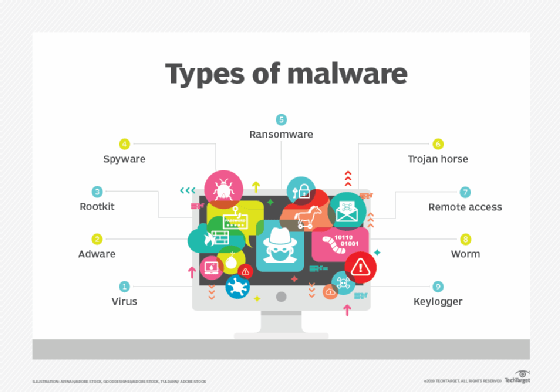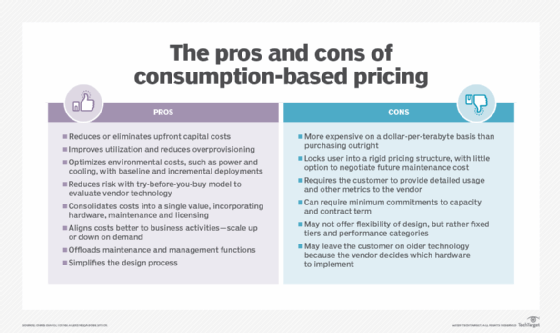Hardware & Software Developer for Aerospace
What is estimator hardware?
Computer hardware is a collective term used to describe whatsoever of the concrete components of an analog or digital computer. The term hardware distinguishes the tangible aspects of a computing device from software, which consists of written, motorcar-readable instructions or programs that tell physical components what to practise and when to execute the instructions.
Hardware and software are complementary. A computing device tin can function efficiently and produce useful output merely when both hardware and software piece of work together appropriately.
Computer hardware can exist categorized as being either internal or external components. Generally, internal hardware components are those necessary for the proper functioning of the calculator, while external hardware components are fastened to the computer to add together or enhance functionality.
What are internal computer hardware components?
Internal components collectively procedure or store the instructions delivered by the programme or operating system (OS). These include the following:
- Motherboard . This is a printed circuit lath that holds the central processing unit (CPU) and other essential internal hardware and functions as the cardinal hub that all other hardware components run through.
- CPU . The CPU is the brain of the reckoner that processes and executes digital instructions from various programs; its clock speed determines the calculator's functioning and efficiency in processing data.
- RAM . RAM -- or dynamic RAM -- is temporary memory storage that makes information immediately accessible to programs; RAM is volatile retention, so stored data is cleared when the computer powers off.
- Difficult drive . Hard disk drive drives are concrete storage devices that shop both permanent and temporary data in different formats, including programs, OSes, device files, photos, etc.
- Solid-country drive ( SSD ). SSDs are solid-state storage devices based on NAND flash memory technology; SSDs are non-volatile, so they tin safely store data even when the computer is powered down.
- Optical bulldoze . Optical drives typically reside in an on-device drive bay; they enable the computer to read and interact with nonmagnetic external media, such as compact disc read-only memory or digital video discs.
- Rut sink. This is a passive piece of hardware that draws heat abroad from components to regulate/reduce their temperature to aid ensure they continue to part properly. Typically, a heat sink is installed directly atop the CPU, which produces the nigh rut amid internal components.
- Graphics processing unit. This chip-based device processes graphical data and often functions equally an extension to the principal CPU.
- Network interface card ( NIC ). A NIC is a excursion board or bit that enables the estimator to connect to a network; also known equally a network adapter or local area network adapter, it typically supports connection to an Ethernet network.
Other calculating components, such equally USB ports, power supplies, transistors and chips, are likewise types of internal hardware.
This computer hardware chart below illustrates what typical internal calculator hardware components look like.

What are external hardware components?
External hardware components, also called peripheral components, are those items that are often externally connected to the figurer to control either input or output functions. These hardware devices are designed to either provide instructions to the software (input) or render results from its execution (output).
Mutual input hardware components include the following:
- Mouse . A mouse is a hand-held pointing device that moves a cursor around a computer screen and enables interaction with objects on the screen. It may be wired or wireless.
- Keyboard . A keyboard is an input device featuring a standard QWERTY keyset that enables users to input text, numbers or special characters.
- Microphone . A microphone is a device that translates sound waves into electrical signals and supports computer-based audio communications.
- Photographic camera. A camera captures visual images and streams them to the computer or through a calculator to a network device.
- Touchpad . A touchpad is an input device, external or built into a laptop, used to control the pointer on a display screen. Information technology is typically an alternative to an external mouse.
- USB flash drive . A USB flash bulldoze is an external, removable storage device that uses wink retentivity and interfaces with a computer through a USB port.
- Memory card . A retention bill of fare is a blazon of portable external storage media, such equally a CompactFlash carte du jour, used to store media or information files.
Other input hardware components include joysticks, styluses and scanners.
Examples of output hardware components include the following:
- Monitor . A monitor is an output device like to a Television receiver screen that displays information, documents or images generated past the computing device.
- Printer . Printers render electronic information from a figurer into printed material.
- Speaker. A speaker is an external audio output device that connects to a computer to generate a sound output.
- Headphones, earphones, earbuds. Similar to speakers, these devices provide audio output that's audible merely to a single listener.
Hardware vs. software
Hardware refers to the computer's tangible components or delivery systems that store and run the written instructions provided by the software. The software is the intangible part of the device that lets the user interact with the hardware and command information technology to perform specific tasks. Computer software includes the following:
- OS and related utilities;
- programs that command certain computer functions; and
- applications that usually perform operations on user-supplied data.
On mobile devices and laptop computers, virtual keyboards are as well considered software considering they're non physical.
Since the software and hardware depend on each other to enable a computer to produce useful output, the software must be designed to piece of work properly with the hardware.
The presence of malicious software, or malware, such as viruses, Trojan horses, spyware and worms, can have a huge effect on computer programs and a system'southward OS. Hardware is non affected by malware, though.
Still, malware can affect the system in other ways. For example, it tin can consume a large portion of the computer'south memory or even replicate itself to fill up the device'due south hard drive. This slows downward the figurer and may likewise prevent legitimate programs from running. Malware can besides preclude users from accessing the files in the estimator's hardware storage.

What is hardware virtualization?
Hardware virtualization is the abstraction of concrete calculating resource from the software that uses those resource. Merely put, when software is used to create virtual versions of hardware instead of using physical, tangible hardware components for some computing function, it is known equally hardware virtualization.
Sometimes referred to as platform or server virtualization, hardware virtualization is executed on a particular hardware platform by host software. It requires a virtual automobile manager called a hypervisor that creates virtual versions of internal hardware. This enables the hardware resources of ane physical machine to be shared amid OSes and applications and to be used more than efficiently.
In cloud computing, hardware virtualization is often associated with infrastructure as a service (IaaS), a commitment model that provides hardware resources over high-speed net. A cloud service provider (CSP), such as Amazon Web Services or Microsoft Azure, hosts all the hardware components that are traditionally present in an on-premises data heart, including servers, storage and networking hardware, as well the software that makes virtualization possible.
This makes IaaS and CSPs different from hardware every bit a service (HaaS) provider that hosts simply hardware but not software. Typically, an IaaS provider also supplies a range of services to accompany infrastructure components, such as the following:
- billing
- monitoring
- log access
- security
- load balancing
- clustering
Some CSPs also provide storage resiliency services, such as automated backup, replication and disaster recovery.
What is hardware as a service?
While it's common for individuals or businesses to purchase figurer hardware so periodically replace or upgrade it, they tin besides lease physical and virtual hardware from a service provider. The provider then becomes responsible for keeping hardware up to engagement, including its various physical components and the software running on it.
This is known as the HaaS model.
The biggest advantage of HaaS is that information technology reduces the costs of hardware purchases and maintenance, enabling organizations to shift from a capital letter expense budget to a more often than not less expensive operating expense upkeep. Also, since most HaaS offerings are based on a pay-every bit-you-go model, it makes it easier for organizations to control costs, while nonetheless having access to the hardware they need for their operational and business continuity.
In HaaS, physical components that belong to a managed service provider (MSP) are installed at a customer's site. A service-level understanding (SLA) defines the responsibilities of both parties.

The client may either pay a monthly fee for using the MSP's hardware, or its employ may be incorporated into the MSP'southward fee structure for installing, monitoring and maintaining the hardware. Either style, if the hardware breaks downward or becomes outdated, the MSP is responsible for repairing or replacing information technology.
Depending upon the terms of the SLA, decommissioning hardware may include wiping proprietary data, physically destroying difficult drives and certifying that old equipment has been recycled legally.
This was last updated in October 2021
Continue Reading About computer hardware
- 7 major server hardware components yous should know
- How to choose the correct PC for business concern
- Information processing units advance infrastructure operation
- Virtual servers vs. physical servers: What are the differences?
- Storage class memory makes its manner into the enterprise
Dig Deeper on Network Infrastructure
-

Nvidia'southward Arm deal is dead
-

embedded operating organisation
-

microcontroller (MCU)
-

read-only memory (ROM)


0 Response to "Hardware & Software Developer for Aerospace"
Post a Comment